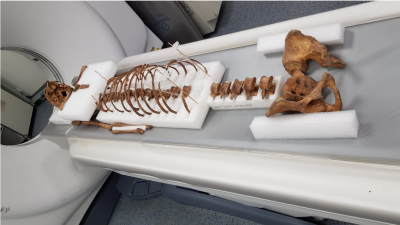
Anthropology / Archaeology
PRESENTATION | SERVICES | TRAINING & RESEARCH
Research
SHIFT collaborators conduct research in anthropology/archaeology, genetics (environmental, plant and animal) and entomology. However, they are also active in other areas such as toxicology, imaging, disaster victim identification, etc. with the support of agreed partnerships.


"Breathing Time": A Bioarchaeological and Medical Assessment of Respiratory Illnesses and Airborne Diseases in Western Switzerland Based on Skeletal Indicators: 16th – 21st Century CE
(Thèse de Tobias Hofstetter - UNIGE)
This project focuses on respiratory illnesses and airborne diseases (hereafter “RIAD”) amongst Switzerland’s urban and rural populations in a chronological range spanning the 16th to the 20th century CE, in a novel interdisciplinary fashion. Within several Swiss osteoarcheological collections, the occurrence of osteological markers of selected RIAD and associated disorders (sinusitis, mastoiditis, otitis, pneumonia, tuberculosis, leprosy, smallpox, measles, scarlet fever, mumps, diphtheria, pertussis, rubella, varicella or lung cancer and inflammation of the rib periosteum) will be diachronically investigated. In this way, this research strives to apprehend the evolution of RIAD in their historical context, as they are known to reflect living, environmental and socioeconomic conditions.
By studying a chronological range encompassing epidemic, climatic, socioeconomic, and nutritional crises between the 16th and 21st centuries, and by contrasting the prevalence rates of RIAD amongst urban and rural populations, this study aims to identify the influence and interplay of socioeconomic, biological, and environmental conditions in the evolution of RIAD through time, with a view to help manage or even prevent such crises in the foreseeable future.
Virtual Anthropology
As CT scans and 3D surface scans become more accurate and readily available, researchers around the world are interested in using these technologies to test and improve current methodologies used in forensic anthropology. At CURML, we test how the "virtual environment" compares to macroscopic observation, and determine which methods are best suited to it. Students and researchers are working on a variety of topics, such as age and sex determination from 3D CT and surface scans, or computerized reconstruction of fragmented bone in DVI settings. We also mobilize these techniques in our services.
Paleopathology
The health status of a population evolves according to the biological and socio-economic environment in which it lives. This is true for the past (archaeological) and modern (forensic) context. To understand why certain diseases and phenomena (infectious diseases, violence, etc.) affect our societies as they do today, we must understand them in their evolution, and thus study their frequency and manifestations in past and present populations. At CURML, we are conducting research on the health of the human population in the Lake Geneva region, from prehistory to the present day, and we are developing new protocols in this field by making good use of the imaging techniques at our disposal.

